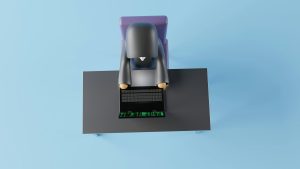Haptic Feedback Suits: Feeling Molecular Structures in Chemistry
Molecular structures are the building blocks of all matter in the universe. These intricate arrangements of atoms and molecules determine the properties of everything around us, from the air we breathe to the food we eat. In the field of chemistry, understanding these structures is crucial in unlocking the secrets of the world we live in. However, visual representations alone may not be enough to fully grasp the complexities of molecular structures. This is where haptic feedback suits come in, providing a revolutionary way of experiencing and understanding molecular structures in chemistry.
The Rise of Haptic Feedback Suits
In recent years, haptic technology has been making its way into various industries, including gaming and healthcare. This technology simulates the sense of touch through vibrations, forces, and motions, enhancing the user’s sensory experience. One of the latest advancements in haptic technology is the development of haptic feedback suits.
These suits, also known as force feedback suits, have sensors placed around the body that can detect and transmit different types of computer-generated feedback. This allows users to feel and interact with virtual environments and objects in a more immersive manner. While initially developed for gaming purposes, haptic feedback suits have found their way into the field of chemistry, providing a new dimension of understanding molecular structures.
Feeling Molecular Structures in Chemistry
Enhancing Visualization and Understanding
In chemistry, being able to visualize and understand the 3D structures of molecules is crucial in predicting their behavior and properties. Traditional methods of representing molecules, such as 2D drawings and 3D models, can sometimes be challenging to grasp, especially for those new to the field. With haptic feedback suits, users can interact with virtual representations of molecular structures in a whole new way.
By wearing a haptic feedback suit, users can feel and manipulate the molecular structures through vibrations and pressure, giving them a better understanding of their shape, size, and orientation. This experience not only enhances visualization but also aids in retaining the knowledge, making it easier to recall and apply in practical settings.
Simplifying Complex Concepts
Molecular structures in chemistry can be complicated and challenging to understand, especially for those without a science background. Haptic feedback suits aim to bridge this gap by simplifying complex concepts in a tangible and interactive manner. Through touch, users can physically experience the different bonds and interactions between atoms, gaining a better understanding of how molecules are formed and how they interact with other molecules.
Advancing Research and Education
Aside from enhancing understanding and visualization, haptic feedback suits also have the potential to advance research and education in the field of chemistry. Students and researchers can use these suits to explore and manipulate virtual structures, providing a hands-on experience that can accelerate the learning process and foster creativity and innovation.
The Future of Haptic Feedback Suits in Chemistry
As technology continues to evolve, the potential applications of haptic feedback suits in the field of chemistry are boundless. Currently, these suits are primarily used for educational and research purposes. However, the use of these suits also has the potential to revolutionize other aspects of chemistry, such as drug discovery and molecular design.
Furthermore, haptic feedback suits can also bridge the gap between theoretical and practical knowledge, allowing researchers and students to physically experience reactions and interactions between molecules. This can lead to more accurate predictions and a better understanding of complex chemical processes.
Conclusion
Haptic feedback suits are a game-changing technology in the field of chemistry. By providing a tangible and interactive experience of molecular structures, these suits have the potential to enhance visualization, simplify complex concepts, and advance research and education. As technology continues to evolve, we can only expect to see more exciting developments in the field of haptic feedback suits and their potential applications in chemistry.









